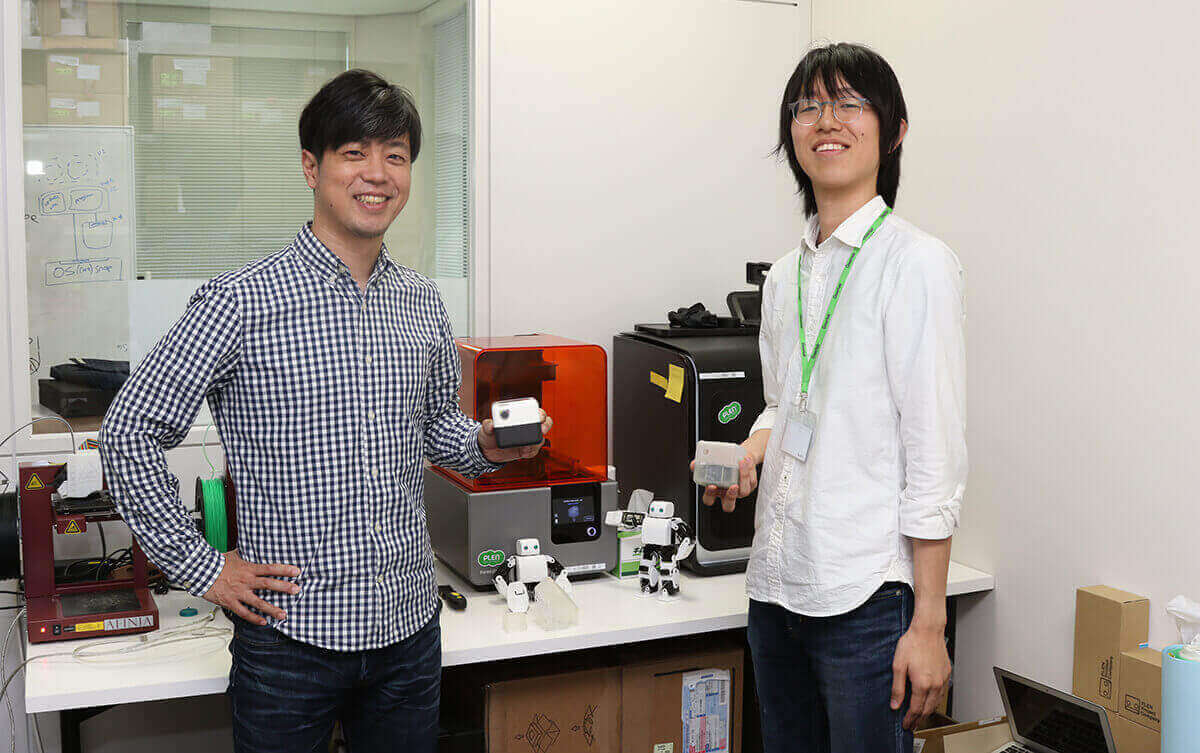Kickstarter veteran PLENGoer details the “futuristic factory” where its PLEN Cube robot is being built. Cloud-based design and rapid prototyping lead the way for them in reinventing product development.
Natsuo Akazawa, President of PLENGoer Robotics is an individual who believes in the next level in manufacturing. Stripping And he’s doing it with cutesy robots.
At the beginning of this year, the company funded the PLEN Cube personal assistant robot successfully on Kickstarter. It is due to be shipped to backers by the end of this year.
The robot is a personal assistant with similar functions to other voice recognition assistants such as Amazon’s Alexa and Apple’s Siri. It features a distinctive design that could be described as anime-meets-retro futurism. Akazawa explains:
“In order for people to use our product, it has to be fun and blend into people’s lives… You can have the best technology in the world, but that won’t matter if the product is cumbersome, ugly, or dull.”
And the result is certainly not dull. With a colorful outer shell and dancing moves to give it personality, the PLEN Cube is a charming device (seriously, check out the video below). But to create it, Akazawa relies upon an agile production environment; one that integrates 3D printing to allow for quick product development.
PLENGoer a Go-Go: Collaborating in the Cloud and 3D Printing
With a team spread across the world, individual members collaborated on the design of the PLEN Cube in the cloud. Engineers based in China, Ireland and Japan all merge their respective iterations in real-time in Autodesk Fusion 360.
At PLENGoer’s main office in Japan, these design iterations are then fabricated on a Formlabs Form 2 SLA 3D printer. In total it is thought that 3D printing cut costs for the PLEN Cube’s outer case by 95 percent. Similarly, total production time reduced by as much as 85%.
Highlighting the benefits over outsourcing such prototyping production, Kazuya Shibata, an engineer at PLENGoer Robotics, explains:
“In the case of outsourcing, we can’t make multiple prototypes on each occasion. The great advantage of the Form 2 used in-house is that we can repeatedly carry out tests… Another great advantage for engineers is the ability to reduce time spent thinking about various parameters and configurations. As soon as a thought pops into my head, it can be verified immediately by printing with the Form 2.”
The team now hope they can integrate 3D printers into every one of their offices around the world. And while Akazawa dreams of the factory of the future, we’d argue that it’s a reality already. Instant collaboration anywhere in the world, and semi-instant (okay, it takes some time to 3D print something) prototyping are tools of the factory today.
Source: Formlabs

License: The text of "Peek Behind the Curtain at PLENGoer Robotics’ Futuristic Factory" by All3DP is licensed under a Creative Commons Attribution 4.0 International License.